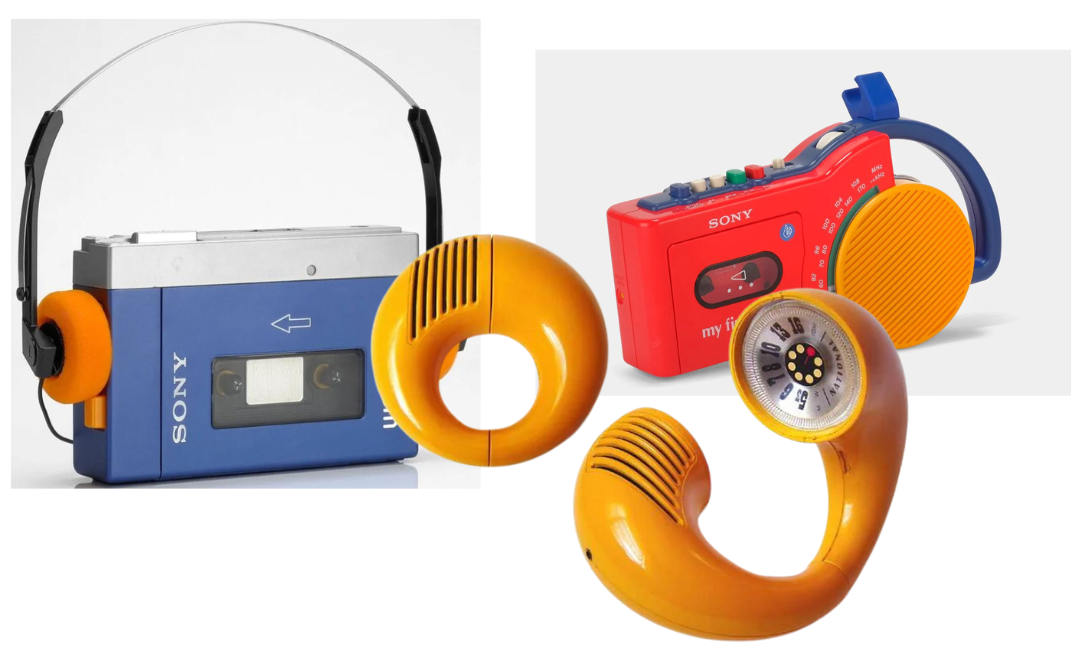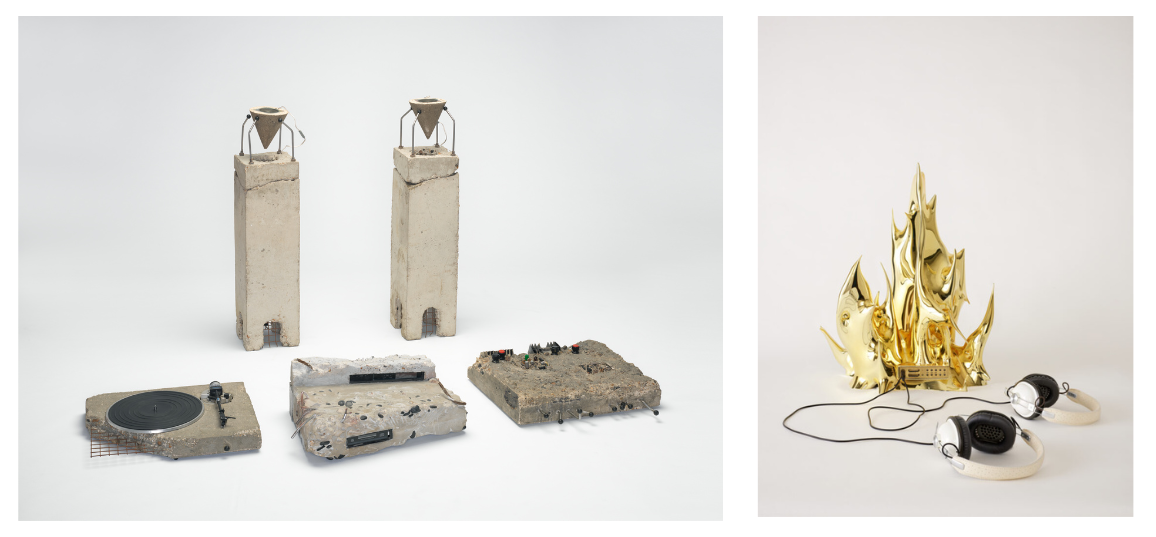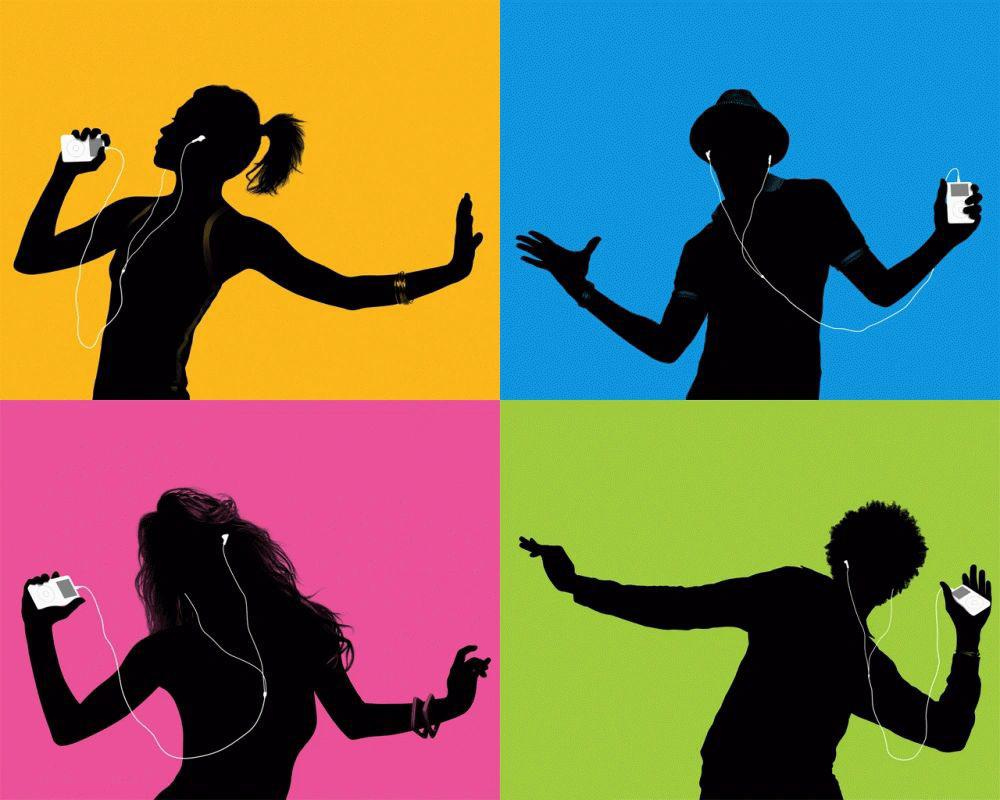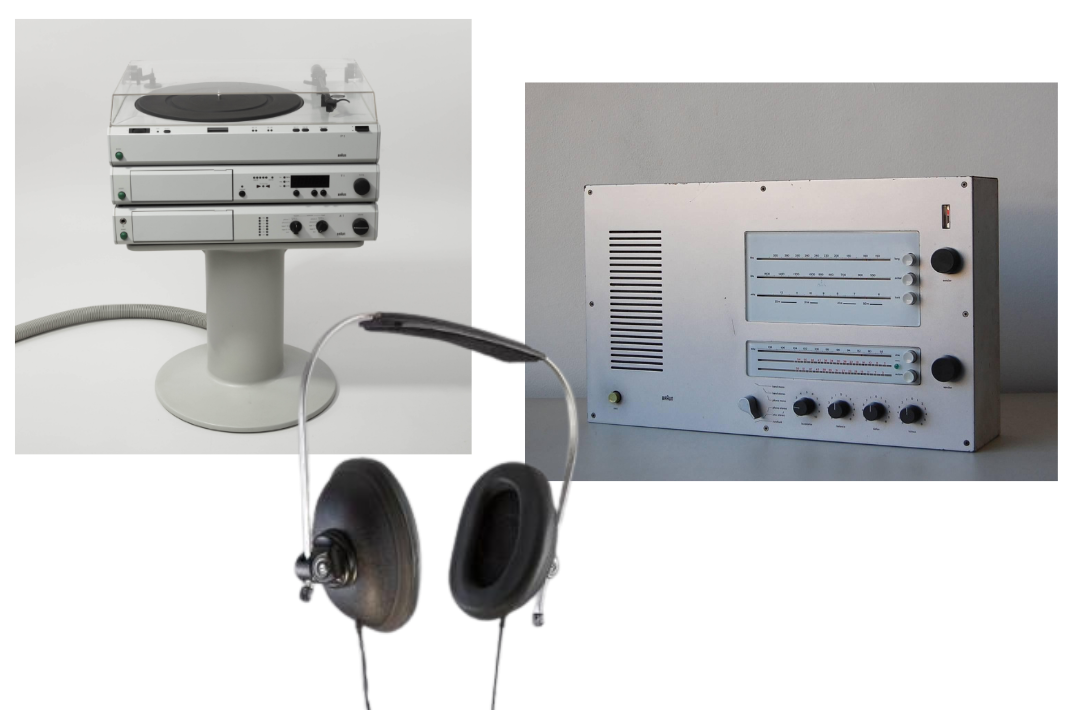Hello! Happy Thursday. Welcome the third installment of the Radio Summer series. If you want the whole shebang, go back and read part 1 and part 2.
This is a short one but a red alert last chance fire sale urgent one, because I’m about to recommend everyone in San Francisco go check out an exhibit that’s currently showing at the SFMOMA, which I realized this morning closes this Sunday, August 18. Oops! Scheduling is not my strong suit!
Romance / Art of Noise exhibit @ SFMOMA / Life in objects, love in music
In the fall of 2015, when the world felt neat and new, I found myself tucked into the corner of a crowded dorm room at a university in the northern suburbs of Chicago, getting drunk off three buck chuck out of coffee mug, watching a shy and beautiful boy stand on a desk chair and croon Frank Sinatra at a crew of strangers that would soon become attached at the soul. It was Johny, singing up there like an angel, deep and true, serenading that righteous freshman crew that was Alex, Jason, Robbie, Evelyn, Kiley, Jack, and me, and I had big ol’ hearts dancing in my eyes.
Eight years and change later, Johny and I are engaged, living in a shabby little apartment in the misty Haight district of San Francisco. He teaches, I write, we cook our dinners in the evening. As it happens with couples who are many years into life together, as romance reveals its position on the mere crust of partnership, it’s a rare treat when we can find the time and energy to plan a real activity-based date for the other. But we do our best. This time around I was the thoughtful one; last week after work I put Johny and myself on the number 7 bus and rode it all the way down Market Street with him puppy dog guessing the whole time—“Are we going to a show at the symphony?” “Drinks at Martunis?” “Dinner at Amber India?”—until we got out at the SFMOMA. I told him we had come to see the Art of Noise exhibit that opened in May.
The exhibit begins with a room of floor-to-ceiling concert posters from San Francisco shows throughout the decades. On the other side, vintage vinyl sleeves with striking cover art was also arranged chronologically. We scanned the art and saw the designs evolve, the culture of the world change. The hard-edged modernism of the 60s softened and became the psychedelic vortexes of the 70s, which transformed into the graphic punkishness of the 80s and 90s, until the internet revolution zipped things into retrofuturism and chromatica and utopian hope, and here we were, seeing it all memorialized and orderly, as if we weren’t living in all the tangled context, we are no random coconuts. . .
The final part of the wall-hang section was a selection of iconic advertisements for audio technology and music objects: The original iPod campaign, a grayscale still from the Maxell “Blown Away” commercial, and others. It was a thoughtfully designed introduction to the main exhibit, an amuse-esprit; a subtle transition from concert posters, symbols of spaces, to advertisements, symbols of objects, that guided the guests out into a computer-blue expanse of actual objects, which included some of the most inspiring music technology and product design I’d ever encountered.
Before we got to the object displays, we paused to chill in the open plan listening lounge. We found an free pair of headphones and sunk into the low, modular sofas embedded with sleek aluminum players from Swedish electronics company teenage engineering, which had designed the entire exhibit alongside the SFMOMA curators. Both futuristic and retro, the Stockholm-based manufacturer has done hypebeasty collabs with clothing brands and celebrity creatives, and at the same time, its website’s homepage is currently marketing a medieval-themed collection of products. The teenage engineering aesthetic is a study in time. Naturally, I found the rewind and fast-forward experience of the embedded players—elegant silver buttons, zippy time travel sounds, scratch the brain itch, over and over—to be maybe even more delightful than the music.
Eventually we gave up our headsets and entered the object room. Each display table had a theme: Radios, speaker systems, mixing tables, headphones. The items on top had been laid down carefully on each display, no glass cases, exposed. No touching of course, but these were functional things, designed not to be gazed upon but to be handled, plugged in, electrified. Life was still in them; that much was clear.
As Johny and I walked around each table of magical objects, we started to play a game: One of us would cover the labels and ask the other, “Where is this from?” We’d slap our hands over the blurbs and look at each other with sparkling eyes. Feast upon the objects! their shapes and colors and accents! and feel all your internalized understanding of geopolitics and international cultures twitch in your bones! That was the challenge. And so we did, and most of the time it was obvious.
Try it (ignore the captions/brand names if you want to play fair):
Where are these from?


The answers:
The first batch: Germany. All by German industrial designer Dieter Rams. The German engineering was austere, efficient, and often colorless, but not without style. Basically anything that looked like the Death Star we clocked as German right away.
The second batch: Japan. Most of the Japanese tech was bright, chubby, and sleek, easily identifiable and uniquely innovative in its design. The beauty of the Japanese aesthetic was perhaps rivaled only by the Swedish product design included in the exhibit.
The third batch: USA. Wood was a big tip-off for American objects, along with art deco styles. With the nuclearization of the family and the rise of suburban living, there was a certain grandeur and seriousness about home entertainment in midcentury American culture, and it showed.
It all made sense. The Canadian systems were massive and wood-paneled, lined with red velvet. The Italian products were cream and black and soft like leather. There were also single representatives for particular countries that were more difficult to identify in a vacuum, but were perfectly logical once we read the labels.

Trío Voces Modernas
But after all, we found our favorite element of the Art of Noise on our way out, in an adjoining room back off the posters section where we’d started. The listening room, titled HiFi Pursuit Listening Room Dream No. 2.
We stepped into the dark and spacious place and folded ourselves up silently against the wall. Hand in hand, we let the music flowing from the magnificent white sound system arranged at the front of the room wash over us. One DJ in the exhibit’s rotation of invited DJs, sitting in his socks behind a rope at the wall opposite us, selected the following album from the stacks of vinyls around him.
We found ourselves under the spell of the song Encuéntrame.
In that moment we sat in the womb, swelling with what felt like the romance of all the latin folk music history had to offer, of Cuban bolero and cha-cha, the sambas of Brazil, the symphonies of mariachi, my favorite. Last year my top Spotify artist specifically in February was the great crooner José Alfredo Jiménez, which made perfect sense to me. It was all romance, companionship, foolishness. For the brief period we spent in Dream Room No. 2 that evening, I forgot all about the objects we’d just seen, so tethered to Earth and time. Suddenly I was everywhere, so in love with everything and everyone and this person beside me, who long ago sang so wonderfully I decided to marry him. Everything is so amazing. Encuéntrame. . .find me! and we did. Sitting there together, I could’ve cried tears of joy, ascended to the skies, danced among the clouds. Some music will do that to you.
If you go see the Art of Noise before it closes on Sunday, save the listening room for last. Explore the world then leave it. Expect to leave lost in space and lovedrunk.








your writing really transports! i enjoyed reading this thanks!!!
Thank you for this recommendation! Haven’t read your post yet cuz I’m making plans to get there today before this exhibit ends. My recommendation: Pier 24. It houses an amazing photo exhibit. The space is closing January 31; this is their last exhibit (city wouldn’t play ball and renegotiate the lease.) It’s big. It’s also free and appointments are for two hours. Its very easy to make an appt online.